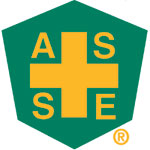Putting safety first applies not only in day to day operations, but also in the planning stages of new projects, investments and expansions. In 2012 ANSI/ASSE created a consensus standard to promote this mentality. Prevention Through Design as a concept in work safety began in the 1940’s and today has gained enough momentum and regulatory support to provide several models that prove its effectiveness. A recent article at ASSE.org charts the effectiveness of engineering safety controls in the design process while considering the defeatability of safety hazard risk.
The most effective controls include elimination, substitution and engineering solutions, each ideally suited to be planned in the design phase of new projects. Doing so will provide safety, productivity, and cost benefits. In fact, the cost of implementing fall prevention through design can be thousands of times less expensive than the same solution integrated post completion. Compromised solutions are often less effective, leaving hazard risks and associated costs.
Fall Prevention Design Case Study
The ASSE article provides a case study from a petrochemical organization building a new offshore platform. The company had experienced the challenges of implementing fall prevention after the design stage and instead chose to hire a fall protection consultant early on to assist the engineering design team. The combined expertise resulted in fall prevention safety measures that focused on productivity and risk abatement. The process consisted of the following steps.
- Kickoff Meeting with Design team
- Virtual Fall Hazard Risk Assessment
- Design Team Workshops
- Specification Binder for Hazard Abatements
- Follow-Through During Construction Process
The benefits of foreseeing and engineering fall prevention through design are long term: safety advantages, productivity gains, and ultimately lower costs. The case study resulted in hazard risk controls addressing elevated platforms, floor openings, ladders, and stair guardrails, helping to prevent the need for PPE and optimize processes, equipment placement and usage. Indirect long term benefits included ‘less equipment purchases, less training and fewer elements to manage.’
Innovative Access Fall Prevention Design
Contacting a consultant while engineering an offshore platform was effective for the company from the ASSE case study. The consultant costs were compared favorably to erecting scaffolding, the cost of which would have been required to address just one of the safety risks post-completion. Innovative Access Solutions is available to contribute similarly during the design or redesign stages at your organization. IAS has worked with Fortune 500 companies as well as SMB businesses to design solutions that provide long term cost and productivity benefits and accomplish your safety goals. IAS designs ladders, platforms and fall prevention equipment and has provided solutions for a range of industries. For a brief review of our access solutions, visit us at IAScustom.com. Or call (800) 388-6884 to schedule an appointment with our team.
